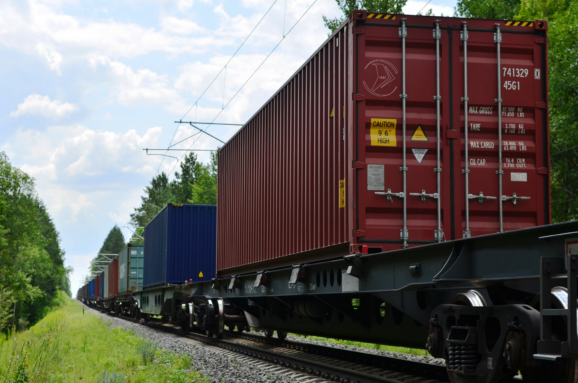Navigating the Road to Sustainability: Harnessing the Power of Intermodal Freight
In a world where climate change is no longer a looming threat but a stark reality, the imperative to act has never been more pressing. It’s time for the logistics and supply chain industry to don the cape of sustainability and embark on a journey towards a greener future. One of the most promising avenues to achieve these sustainability goals is through the integration of intermodal freight – a method that not only reduces emissions but also enhances efficiency and reliability in shipping.
The Climate Change Conundrum
Before delving into the transformative potential of intermodal shipping, let’s address the elephant in the room – climate change. Our planet is facing an existential crisis, with rising temperatures, extreme weather events, and dwindling natural resources becoming increasingly common. It’s a dire situation that necessitates immediate and concerted action from all sectors of society.
Enter the logistics and supply chain industry, a sector that plays a pivotal role in the global economy but is also a significant contributor to carbon emissions. As consumers demand greener practices and governments tighten regulations, trucking and shipping companies are feeling the heat to find innovative solutions to reduce their environmental footprint.
The Environmental Impact of Intermodal Shipping
Now, let’s shine a spotlight on intermodal shipping and the remarkable benefits it brings to the table. At its core, intermodal freight involves the seamless transfer of cargo between multiple modes of transportation, such as trucks, trains, ships, and even planes. This multifaceted approach offers a multitude of advantages, with sustainability taking center stage.
1. Reducing Emissions
Intermodal shipping’s greatest asset in the fight against climate change is its ability to reduce emissions. Traditional long-haul trucking often results in higher fuel consumption and emissions per unit of freight moved. In contrast, intermodal transportation allows companies to optimize their routes, shifting from road to rail or sea when feasible. This not only minimizes the carbon footprint but also alleviates congestion on our highways.
Consider this: a single train can carry the load of hundreds of trucks, making it a significantly more energy-efficient and eco-friendly choice for long-distance hauls. Moreover, ships are among the most fuel-efficient modes of transport, offering a substantial reduction in emissions compared to airfreight.
2. Enhanced Efficiency and Reliability
Intermodal shipping isn’t just about going green; it’s also about boosting efficiency and reliability in the supply chain. By seamlessly integrating various modes of transportation, companies can avoid bottlenecks, reduce transit times, and enhance the overall flow of goods. This not only pleases customers but also trims down costs – a win-win situation for all involved.
Revolutionizing the Trucking Industry with Intermodal Shipping
So, how can current trucking companies leverage the power of intermodal shipping to reduce their environmental impact and drive sustainability? Here are some actionable steps:
1. Embrace Collaboration
Intermodal freight necessitates close collaboration between various stakeholders – from shippers and carriers to railroads and ports. Trucking companies should seek partnerships that facilitate the smooth transition of cargo between modes. By aligning interests and sharing resources, a seamless intermodal network can emerge.
2. Invest in Infrastructure
Infrastructure plays a pivotal role in the success of intermodal shipping. Trucking companies should consider investing in terminals, rail yards, and facilities that support intermodal operations. By creating an integrated network, they can unlock the true potential of this sustainable approach.
3. Prioritize Training and Education
Transitioning to intermodal shipping may require a shift in mindset and skill set for trucking company employees. Offering training and education programs can help your team adapt to the nuances of intermodal transportation, ensuring a smooth transition.
4. Leverage Technology
The logistics and supply chain industry is undergoing a digital revolution. Trucking companies can harness the power of technology to optimize intermodal operations, from real-time tracking systems to data analytics that enable better decision-making.
In conclusion, the path to sustainability in the logistics and supply chain industry is intertwined with intermodal freight. By reducing emissions, enhancing efficiency, and collaborating with other stakeholders, current trucking companies can pivot toward a greener, more sustainable future. It’s a journey that not only benefits the planet but also promises economic rewards and a competitive edge in an increasingly eco-conscious world.
The road to sustainability may be challenging, but it’s also paved with promise and potential. By embracing intermodal shipping, the logistics and supply chain industry can set itself on a course towards a brighter, greener, and more sustainable future. Together, we can transform the way we move goods, one intermodal container at a time.
